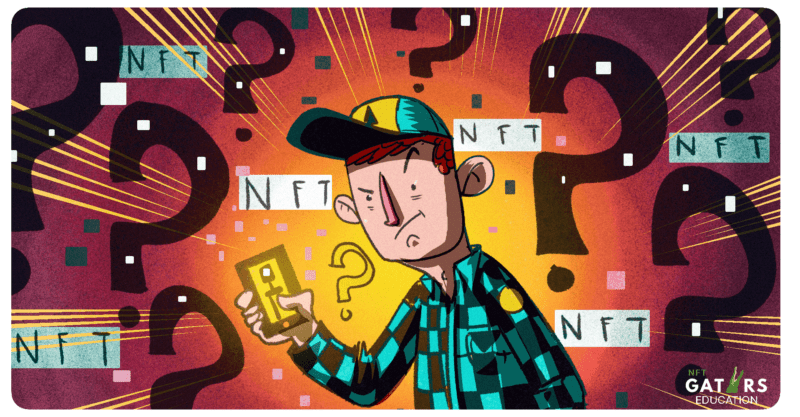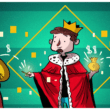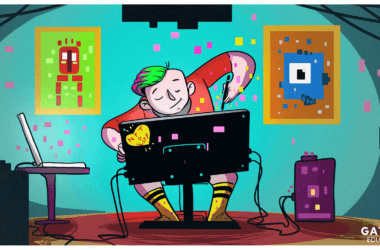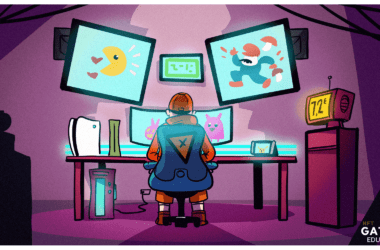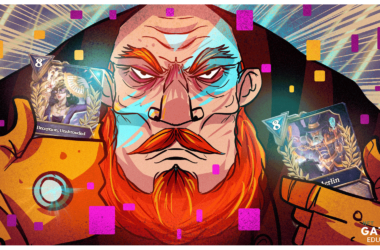Last Updated on March 19, 2023
With blockchain technology exploding in popularity and disrupting hundreds, if not thousands, of industries, new use cases for this fascinating new technology are emerging on a daily basis. One of this industry’s most widely adopted functions is the non-fungible token, otherwise known as an NFT.
For a long time, these specialized digital assets have been one of the fastest-growing sectors in the entire crypto ecosystem, generating a lot of media hype and speculation in the process. However, most people are unaware of how they are generated, their applications, and their societal significance due to their nature. What’s more, people don’t quite know what to make of this trend and whether or not they should participate in the hype or leave it well alone. If this sounds like you, you’ve come to the right place since we’re about to provide you with a complete beginner’s guide to the frequently misunderstood world of NFTs.
What is an NFT?
An NFT (non-fungible token) is a digital asset that can be identified through its unique qualities held within its metadata. Due to the way they are designed and minted, NFTs are unique and cannot be replaced, altered, or changed in any way. Once they have been created, they will be permanently etched on the blockchain’s public ledger for all to see.
The term fungible means that another identical item can replace an item or good with the same value. A good example of this would be the US Dollar. A $1 bill is worth just the same as any other $1 bill. If someone asks you to trade bills, you won’t gain anything, and you wouldn’t lose anything either.
However, that is not the case with NFTs.
If you purchase an NFT, you will be the only person in the entire world to hold that asset – and you can prove it. These attributes lend themselves extremely well to various industries (especially the creative ones).
Read more: What Makes an NFT Valuable?
How do NFTs work?
Time to get a bit more technical. Almost all NFTs function as part of a blockchain. For those unfamiliar with this popular tech, the blockchain is a digital distributed, decentralized, public ledger that functions as a large network. The ledger records transactions on the network, making them publicly visible. In most cases, this builds a trustless system based on verifiable and quantifiable data.
Most NFTs are built upon the Ethereum blockchain, one of the largest and most reputable in the world. This is not to be confused with ETH (Ether), the cryptocurrency used to power the network. On the Ethereum network, the vast majority of NFTs are built using the ERC-721, which gives the token those unique qualities we mentioned earlier.
Currently, NFTs are mostly used to verify ownership of digital goods. As a result, a vast array of business sectors are beginning to adopt this technology, from Nike venturing into selling virtual sneakers to famous art galleries exploring them as an option to validate and verify the ownership and authenticity of digital art.
A brief history of NFTs
Interestingly, the history of NFTs can be traced back to 2012-14, when what is commonly referred to as a “colored coin” was issued on the Bitcoin blockchain. These coins were made into tokens meant to represent real-world assets on the blockchain, merging both the digital and physical worlds. Since then, the technology and potential use cases have become far more sophisticated.
After a few developments and interesting innovations, it wasn’t until 2016, when memes began to enter the blockchain world, that NFTs started to gain traction. Rare Pepes quickly became an internet sensation, and users began to trade them amongst each other using NFT technology in the process. At the tail end of 2021, one of these memes fetched $500k in a sale on NFT marketplace, OpenSea.
In 2017, John Watkinson and Matt Hall, the creators of Larva Labs, created unique characters generated on the Ethereum blockchain. They created 10,000 unique characters in a series called CryptoPunks, and they quickly became a smash hit with digital art collectors. CryptoPunk #7523 seemed to gather a ton of interest, selling for a staggering $11.75 million for one reason or another. However, that certainly wasn’t the first large sale of an NFT.
The list of astronomical sales fees paid for NFTs goes on and on, with the world record being broken on 2nd December 2021, after an NFT titled The Merge was sold for $91.8 million.
Common use cases for NFTs
Now you know how NFTs work and their history, let’s finish by taking a look at some types of NFTs and their use cases:
Art
The most obvious use case for NFTs is verifying and validating crypto art. Thanks to their unique identifying capabilities, NFT artists and investors can verify the authenticity of artwork and eliminate the chance of forgery.
Fashion
High-end fashion houses are making their way to the NFT scene, selling physical items with digital companions. There are also numerous use cases for fashion and clothing in virtual worlds and augmented reality.
The metaverse
The metaverse is a place where NFTs thrive. In these virtual worlds, you can browse, buy, and store NFTs within your very own piece of virtual real estate.
Licenses and certifications
NFTs lend themself very well to the licensing and certification industry as they can be used to verify university qualifications and other licenses. Once again, this eliminates the possibility of forgery and fraud, which is extremely beneficial to employers and organizations.
Music
The music industry has been crying out for disruption for quite some time, and NFTs are offering a genuine solution to many of the age-old problems within the industry. For example, NFT royalties allow artists to reclaim full control over their creative works by receiving 1100% of the royalties owed to them in perpetuity, thanks to the smart contract capabilities within NFTs.
Events and ticketing
Events and ticketing is another industry that struggles with forgeries and fakes and a whole host of issues that can be remedied through the use of NFTs.
Gaming and digital collectibles
Last but not least, blockchain games and digital collectibles are some of the widely adopted use cases for NFTs. With billions of gamers buying digital goods inside games, NFTs offer a way for players to own their items outside of the encapsulated environment of the game that they purchased the goods in and even offer the possibility of transferring the NFT to be used in a different game/metaverse.
>> Check out some of the best Play to Earn crypto games out there!
Bottom line
With the metaverse looking like it’s on course for mass adoption and the art world experiencing somewhat of a digital resurgence, it looks like NFTs will play an increasingly important role in our society in the coming years. As some of the bigger players enter the space and more investment piles in, it will be interesting to see the innovation and how NFTs will be adopted to overcome real-world issues.
FAQ
What are the benefits of owning an NFT?
Owning an NFT gives you proof of ownership and authenticity of a digital asset, such as a piece of art. It also allows you to potentially sell or trade the asset in the future.
Can NFTs be used for anything other than buying and selling digital assets?
Yes, NFTs can also be used for things like establishing proof of ownership for physical items, such as real estate or collectibles, and for creating in-game items in decentralized gaming platforms.
